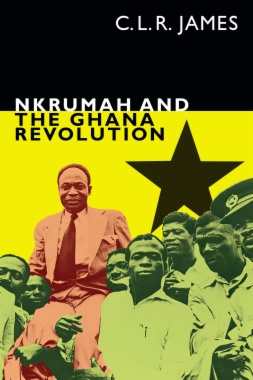In this new edition of Nkrumah and the Ghana Revolution, C. L. R. James tells the history of the socialist revolution led by Kwame Nkrumah, the first president and prime minister of Ghana. Although James wrote it in the immediate post-independence period around 1958, he did not publish it until nearly twenty years later, when he added a series of his own letters, speeches, and articles from the 1960s. Although Nkrumah led the revolution, James emphasizes that it was a popular mass movement fundamentally realized by the actions of everyday Ghanaians. Moreover, James shows that Ghana’s independence movement was an exceptional moment in global revolutionary history: it moved revolutionary activity to the African continent and employed new tactics not seen in previous revolutions. Featuring a new introduction by Leslie James, an unpublished draft of C. L. R. James's introduction to the 1977 edition, and correspondence, this definitive edition of Nkrumah and the Ghana Revolution offers a revised understanding of Africa’s shaping of freedom movements and insight into the possibilities for decolonial futures.
- Cover
- Contents
- Editor’s Note��������������������
- Acknowledgments����������������������
- Introduction | Ghana and the Worlds of C. L. R. James / Leslie James
- Nkrumah and the Ghana Revolution
- Introduction | 1977 Edition
- Part I
- 1. The Myth
- 2. The Masses Set the Stage
- 3. The People in 1947
- 4. The Revolution in Theory
- 5. The Men on the Spot
- 6. The People and the Leader
- 7. Positive Action
- 8. The Party under Fire
- 9. The Tip of the Iceberg
- Part II
- 1. Government and Party
- 2. 1962: Twenty Years After
- 3. Slippery Descent
- 4. Lenin and the Problem
- 5. “ . . . Always out of Africa”
- Appendix 1 | Correspondence, 1957
- Notes on Appendix 1 / Leslie James
- Extract of letter from C. L. R. James to the Correspondence Publishing Committee, Addressed to Martin Glaberman����������������������������������������������������������������������������������������������������������������������
- Letters from C. L. R. James to the Correspondence Publishing Committee
- Appendix 2 | “Africa: The Threatening Catastrophe— A Necessary Introduction,” 1964
- Notes on Appendix 2 / Leslie James
- Excerpt from “Nkrumah Then and Now”
- Notes������������
- Index������������
- A
- B
- C
- D
- E
- F
- G
- H
- I
- J
- K
- L
- M
- N
- O
- P
- Q
- R
- S
- T
- U
- V
- W

